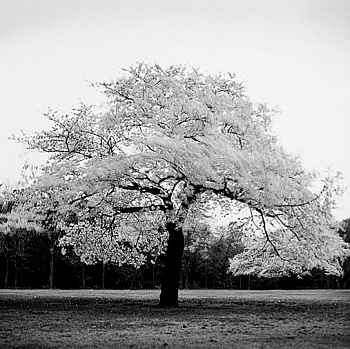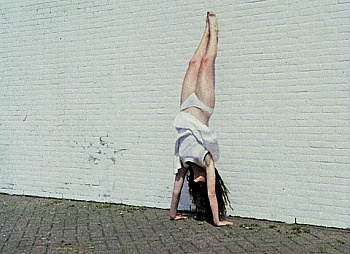 Toshio Enomoto exposes the Japanese Soul in his photographs
Toshio Enomoto, born 1947 in Tokyo, belongs to the generation of Japanese after-WWII-photographers such as Shomei Tomatsu or Imei Suda, just to mention two of the most prominent representatives.
We would stretch this blog a bit too much if we would write extensively about Enomoto’s complete photographic oeuvre so far, so we will concentrate our post on Enomoto’s visual language and its effects on our western viewing habits.
The difference between Japanese and Western viewers in interpreting what is seen is particularly accentuated in his Sakura pictures of his series “Kagirohi” (which roughly means “light shortly before dawn”).
Our western eyes interprets the cherry blossoms as a symbol of new life, the aw...
Toshio Enomoto exposes the Japanese Soul in his photographs
Toshio Enomoto, born 1947 in Tokyo, belongs to the generation of Japanese after-WWII-photographers such as Shomei Tomatsu or Imei Suda, just to mention two of the most prominent representatives.
We would stretch this blog a bit too much if we would write extensively about Enomoto’s complete photographic oeuvre so far, so we will concentrate our post on Enomoto’s visual language and its effects on our western viewing habits.
The difference between Japanese and Western viewers in interpreting what is seen is particularly accentuated in his Sakura pictures of his series “Kagirohi” (which roughly means “light shortly before dawn”).
Our western eyes interprets the cherry blossoms as a symbol of new life, the aw... This exhibition is based on the idea of 'infatuations' that can affect both photographers and exhibition curators. People often suppose that museums make choices as objectively as possible, but actually this is far from from the truth. Just as an artist may feel physically and emotionally attracted to a particular subject, the collector or curator might also have a ‘crush’ on a certain work. The term ‘the infatuated camera’ comes from the title of a 1971 film by Ed van der Elsken, De Verliefde Camera, a compilation of travel clips previously filmed by him. This exhibition has been assembled in a similar way; photographs and film rushes from the present day contrast with excerpts and impressions from the previous century. Works have been seemingly casually arranged according to summery themes: hang...
This exhibition is based on the idea of 'infatuations' that can affect both photographers and exhibition curators. People often suppose that museums make choices as objectively as possible, but actually this is far from from the truth. Just as an artist may feel physically and emotionally attracted to a particular subject, the collector or curator might also have a ‘crush’ on a certain work. The term ‘the infatuated camera’ comes from the title of a 1971 film by Ed van der Elsken, De Verliefde Camera, a compilation of travel clips previously filmed by him. This exhibition has been assembled in a similar way; photographs and film rushes from the present day contrast with excerpts and impressions from the previous century. Works have been seemingly casually arranged according to summery themes: hang...